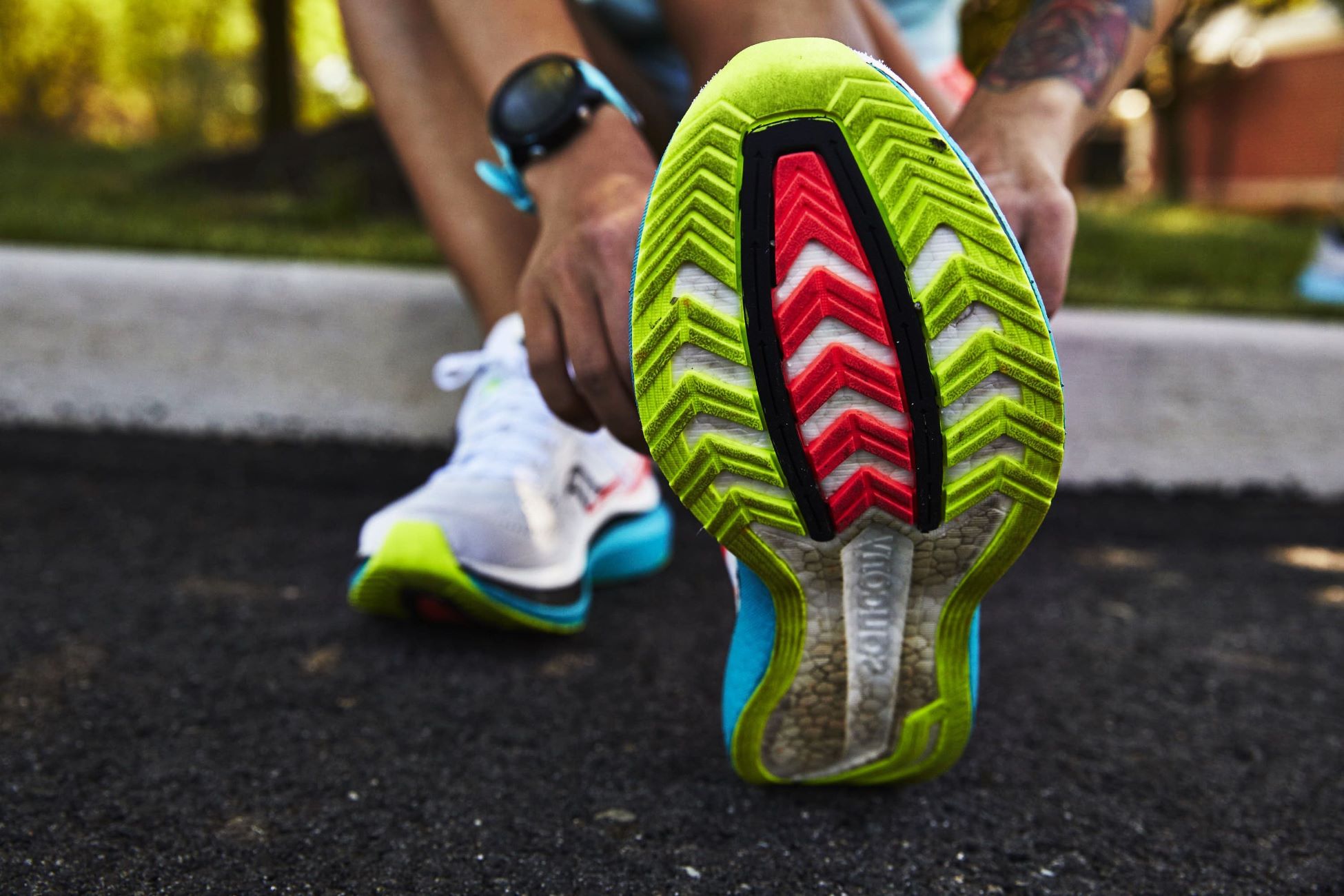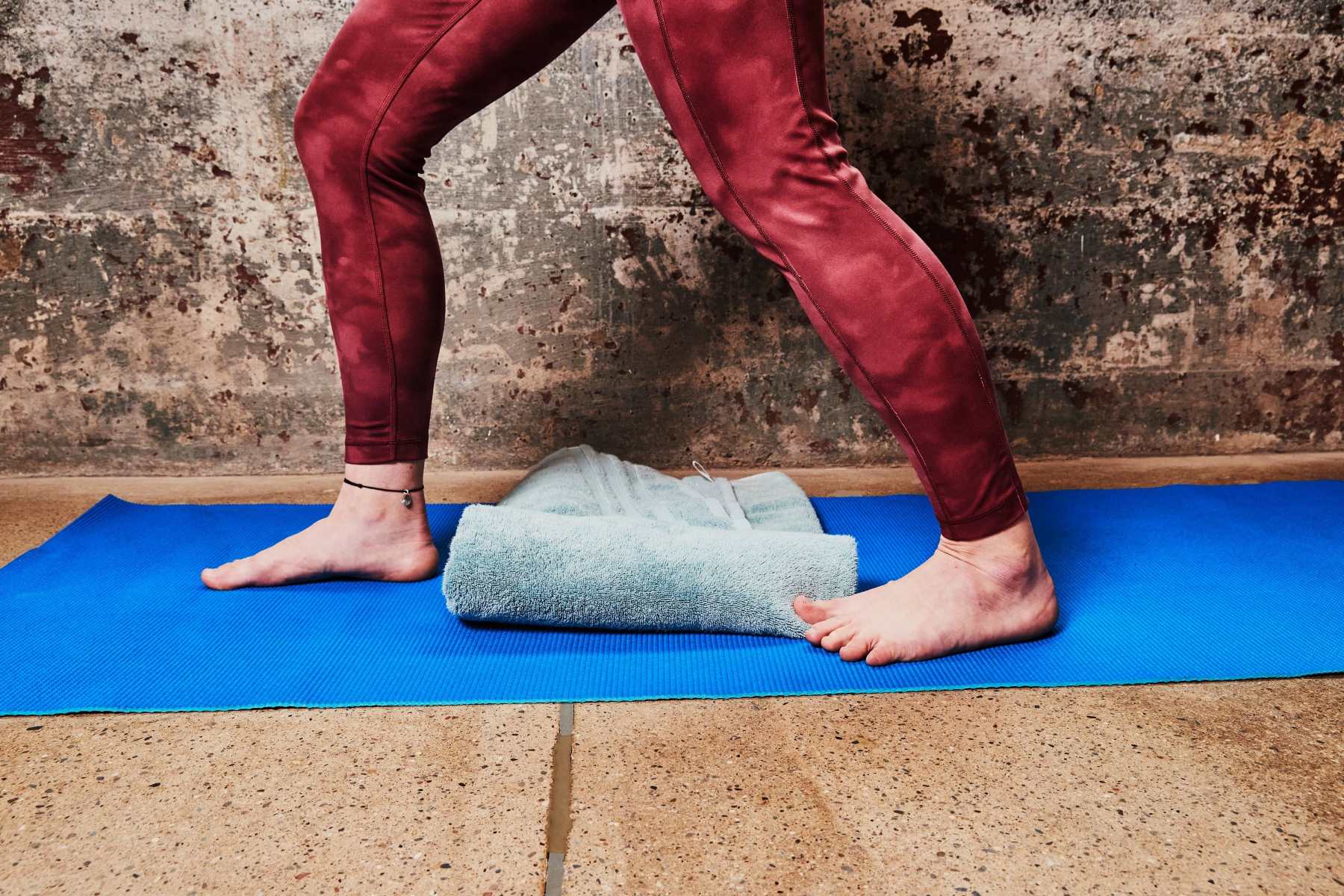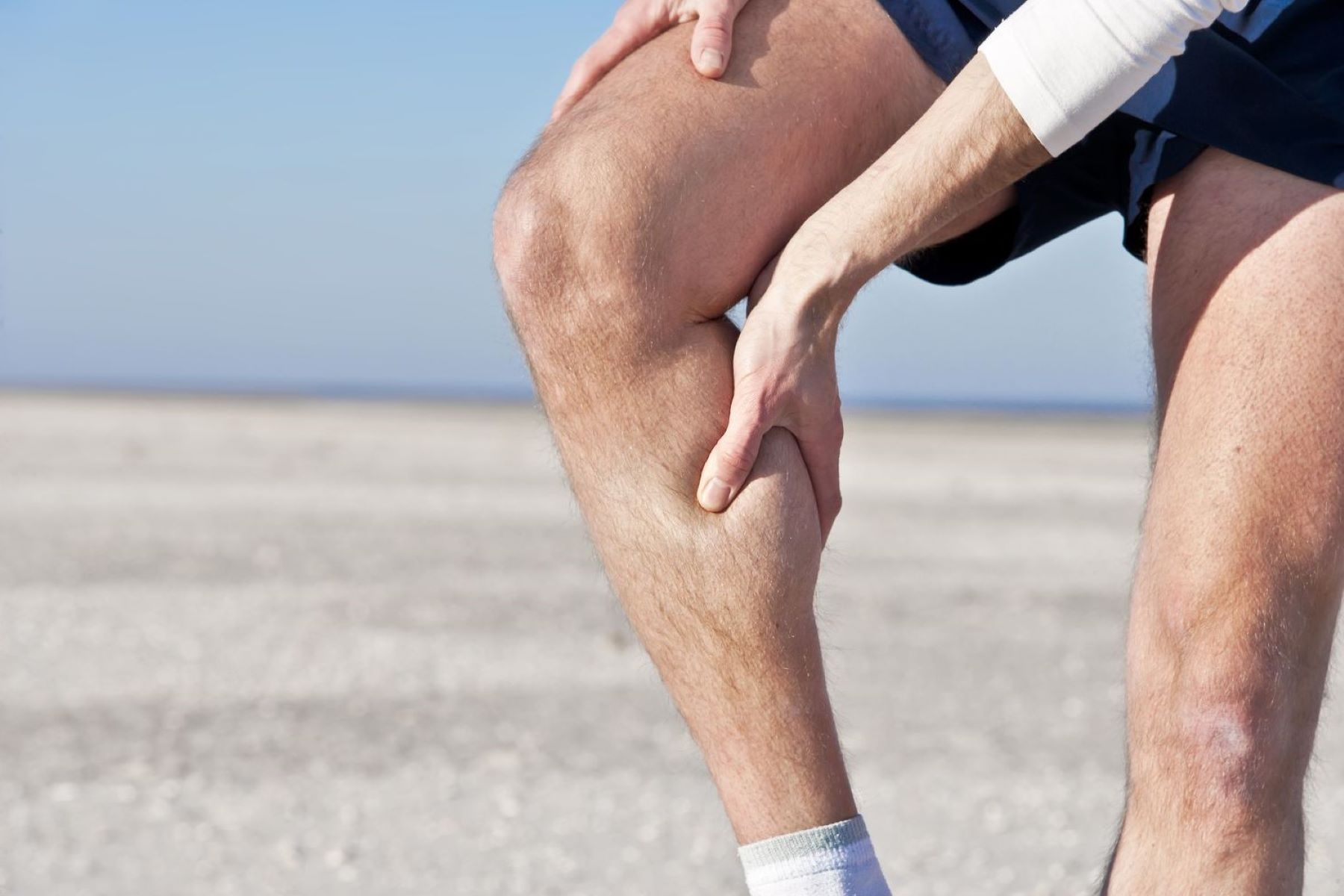Home>Health & Nutrition>Injury Prevention>How To Fix Muscle Imbalances In Running


Injury Prevention
How To Fix Muscle Imbalances In Running
Published: February 24, 2024
Learn how to prevent running injuries by fixing muscle imbalances. Discover effective strategies for injury prevention in running.
(Many of the links in this article redirect to a specific reviewed product. Your purchase of these products through affiliate links helps to generate commission for Therunningadvisor.com, at no extra cost. Learn more)
Table of Contents
Understanding Muscle Imbalances in Running
Muscle imbalances are a common issue among runners, often stemming from repetitive movements and overuse of certain muscle groups. These imbalances can lead to a range of problems, including decreased performance, increased risk of injury, and discomfort during running. Understanding the underlying causes of muscle imbalances is crucial for effectively addressing and preventing them.
When we run, certain muscles are utilized more than others, leading to discrepancies in strength and flexibility. For instance, the quadriceps, hamstrings, calves, and hip flexors are heavily engaged during running, while the glutes, adductors, and core muscles also play significant roles in providing stability and power. However, if one set of muscles is significantly stronger or tighter than its counterpart, imbalances can occur.
Moreover, poor running form and biomechanics can exacerbate muscle imbalances. For example, overstriding, excessive hip drop, and inadequate core engagement can place uneven stress on the muscles, leading to imbalances over time. Additionally, previous injuries or weaknesses in specific muscle groups can contribute to imbalances, as the body may compensate by overworking other muscles.
Understanding the impact of muscle imbalances on running performance and overall well-being is essential for devising an effective strategy to address them. By recognizing the specific muscles that are disproportionately affected and the potential causes of these imbalances, runners can take proactive steps to restore balance, enhance performance, and reduce the risk of injuries.
Identifying Muscle Imbalances
Identifying muscle imbalances is a crucial step in addressing and preventing potential issues that may arise during running. By recognizing the signs and symptoms of imbalances, runners can take proactive measures to restore equilibrium and optimize their performance. Here are some key indicators to help identify muscle imbalances:
-
Pain and Discomfort: Persistent pain or discomfort in specific areas of the body, such as the knees, hips, lower back, or ankles, can indicate muscle imbalances. For instance, tight hip flexors or weak glutes can lead to increased stress on the knees and lower back, resulting in discomfort during and after running.
-
Asymmetrical Movement: Observing asymmetrical movements or gait patterns during running can signal potential muscle imbalances. This may include noticeable differences in the extension or flexion of the legs, uneven arm swings, or imbalanced weight distribution while running.
-
Limited Range of Motion: Reduced flexibility and limited range of motion in certain muscle groups can be indicative of imbalances. For instance, tight hamstrings or calves may restrict the natural movement of the legs, affecting running efficiency and increasing the risk of injury.
-
Muscle Fatigue and Weakness: Experiencing muscle fatigue or weakness in specific areas, especially during longer runs or intense workouts, can point to imbalances. For example, if the quadriceps fatigue quickly while the hamstrings remain relatively unaffected, it may indicate an imbalance between these muscle groups.
-
Previous Injuries: Recurring or lingering injuries in particular muscle groups can highlight existing imbalances. For instance, a history of hamstring strains or calf injuries may signify weaknesses or tightness that need to be addressed to prevent future issues.
-
Postural Alignment: Assessing postural alignment and muscle symmetry can reveal imbalances. This includes observing pelvic tilt, shoulder positioning, and spinal alignment, as deviations from proper posture may indicate underlying muscle imbalances.
By paying attention to these indicators and conducting a thorough self-assessment, runners can gain valuable insights into their muscle imbalances. Additionally, seeking professional guidance from a physical therapist or sports medicine specialist can provide a comprehensive evaluation and personalized recommendations for addressing specific imbalances. Identifying muscle imbalances is the first step towards implementing targeted strategies to restore balance, enhance running performance, and reduce the risk of injuries.
Correcting Muscle Imbalances through Strength Training
Addressing muscle imbalances through targeted strength training is a fundamental aspect of injury prevention and performance enhancement for runners. By incorporating specific exercises that focus on strengthening weaker muscle groups and improving overall muscular balance, runners can effectively correct imbalances and optimize their running mechanics. Here's a detailed exploration of how strength training can be utilized to address muscle imbalances:
Targeted Muscle Groups
Identifying the specific muscle groups that are imbalanced is crucial for designing a tailored strength training program. For instance, if the quadriceps are significantly stronger than the hamstrings, exercises targeting the hamstrings, such as deadlifts, hamstring curls, and glute-ham raises, can help rebalance the strength ratio between these muscle groups. Similarly, if the glutes are underdeveloped compared to the hip flexors, exercises like hip thrusts, lunges, and lateral band walks can be incorporated to strengthen the glutes and improve overall hip stability.
Progressive Overload
Implementing a progressive overload approach in strength training is essential for stimulating muscle growth and adaptation. Gradually increasing the resistance, volume, or intensity of exercises allows the muscles to adapt and grow stronger over time. This progressive approach is particularly beneficial for addressing imbalances, as it enables targeted muscle groups to develop strength and endurance in a controlled manner, reducing the risk of overexertion and injury.
Read more: The Impact Of Running On Muscle Hernia
Bilateral and Unilateral Exercises
Incorporating both bilateral and unilateral exercises in strength training can effectively address imbalances and enhance overall muscular symmetry. Bilateral exercises, such as squats and deadlifts, engage both sides of the body simultaneously, promoting balanced strength development. On the other hand, unilateral exercises, including single-leg squats, lunges, and single-leg deadlifts, help identify and correct strength discrepancies between the left and right sides of the body, fostering equal strength and stability.
Core Strengthening
A strong and stable core is essential for maintaining proper running form and reducing the risk of imbalances. Incorporating core-strengthening exercises, such as planks, Russian twists, and bicycle crunches, can improve overall core stability and balance, which in turn supports the proper alignment and function of the lower body muscles during running.
Eccentric and Isometric Training
Integrating eccentric and isometric training into the strength training regimen can further aid in correcting imbalances. Eccentric exercises, where the muscle lengthens under tension, can be particularly beneficial for strengthening weaker muscle groups. For example, eccentric calf raises can help address calf imbalances by focusing on the controlled lengthening phase of the exercise. Isometric exercises, which involve static muscle contractions, can also contribute to enhancing muscle stability and balance, complementing the dynamic movements involved in running.
By strategically incorporating these principles into a comprehensive strength training program, runners can effectively correct muscle imbalances, reduce the risk of injuries, and improve overall running performance. Consistency and progressive adaptation are key factors in reaping the benefits of strength training for addressing imbalances, ultimately supporting a balanced and resilient musculoskeletal system for running.
Improving Muscle Balance with Flexibility and Mobility Exercises
Flexibility and mobility play a pivotal role in enhancing muscle balance, optimizing running mechanics, and mitigating the risk of injuries for runners. By incorporating targeted flexibility and mobility exercises into their training regimen, runners can address muscle imbalances, improve joint range of motion, and promote overall musculoskeletal health. Here's an in-depth exploration of how flexibility and mobility exercises can effectively contribute to muscle balance improvement:
Dynamic Stretching
Dynamic stretching exercises involve controlled, repetitive movements that actively stretch and engage the muscles, tendons, and ligaments. These exercises not only enhance flexibility but also promote muscle coordination and balance. For runners aiming to improve muscle balance, dynamic stretches targeting specific muscle groups, such as leg swings, walking lunges, and high knees, can help address tightness and asymmetries while preparing the body for the dynamic demands of running.
Myofascial Release
Myofascial release techniques, including foam rolling, massage balls, and percussion therapy, can aid in releasing tension and adhesions within the muscles and fascia. By incorporating myofascial release into their routine, runners can alleviate muscle tightness, improve tissue elasticity, and enhance overall muscle balance. Targeting areas prone to imbalances, such as the quadriceps, hamstrings, calves, and glutes, with myofascial release can help restore optimal muscle function and reduce the likelihood of compensatory movements during running.
Active and Passive Stretching
Active and passive stretching exercises are valuable tools for improving muscle flexibility and balance. Active stretching involves using the strength of opposing muscles to facilitate the stretch, promoting greater control and stability within the muscle groups. On the other hand, passive stretching utilizes external forces, such as gravity or a partner, to achieve a deep stretch, aiding in releasing tension and promoting relaxation within the muscles. By incorporating a combination of active and passive stretches targeting imbalanced muscle groups, runners can enhance flexibility and restore equilibrium to support efficient running mechanics.
Mobility Drills
Incorporating mobility drills that focus on joint articulation and movement patterns can significantly contribute to improving muscle balance and overall functional mobility. These drills often involve multi-planar movements that challenge the body's range of motion and stability, promoting balanced strength and flexibility across various muscle groups. Including exercises such as hip circles, shoulder dislocates, and ankle mobility drills can help address imbalances and enhance joint mobility, ultimately supporting smoother and more efficient running mechanics.
Yoga and Pilates
Practicing yoga and Pilates can offer comprehensive benefits for improving muscle balance, flexibility, and core stability. These disciplines emphasize controlled movements, deep stretching, and mindful muscle engagement, fostering a harmonious balance between strength and flexibility. By integrating yoga poses, such as Warrior series and pigeon pose, as well as Pilates exercises targeting the core and stabilizing muscles, runners can cultivate a well-rounded approach to enhancing muscle balance and overall body awareness.
By incorporating these flexibility and mobility exercises into their training routine, runners can effectively address muscle imbalances, enhance joint mobility, and promote overall musculoskeletal health. Consistency and mindful execution of these exercises are key to reaping the benefits of improved muscle balance, ultimately supporting optimal running performance and reducing the risk of injuries.
Adjusting Running Form to Address Muscle Imbalances
Adapting running form to address muscle imbalances is a strategic approach that can significantly contribute to restoring equilibrium, optimizing performance, and reducing the risk of injuries for runners. By making conscious adjustments to their running mechanics, individuals can effectively target imbalanced muscle groups, promote symmetrical movement patterns, and enhance overall muscular coordination. Here's an in-depth exploration of how runners can modify their running form to address muscle imbalances:
Postural Alignment and Core Engagement
Maintaining proper postural alignment and engaging the core muscles play a pivotal role in addressing muscle imbalances during running. By focusing on aligning the head, shoulders, hips, and feet in a neutral position, runners can minimize excessive stress on specific muscle groups and promote balanced muscle engagement. Additionally, engaging the core muscles, including the abdominals, obliques, and lower back, supports overall stability and reduces the likelihood of compensatory movements that can exacerbate imbalances.
Stride Length and Cadence
Adjusting stride length and cadence can help distribute the workload across different muscle groups, promoting a more balanced and efficient running gait. For runners with imbalances, shortening the stride length can reduce the impact on overused muscles, such as the quadriceps, while allowing for more active engagement of the glutes and hamstrings. Moreover, increasing cadence, or steps per minute, can facilitate a smoother transition between strides, minimizing the strain on specific muscle groups and promoting a more symmetrical and balanced running pattern.
Foot Strike and Ground Contact
Modifying foot strike and ground contact can influence the distribution of forces throughout the lower body, thereby addressing imbalances and reducing the risk of overuse injuries. For instance, transitioning from a heel strike to a midfoot or forefoot strike can help alleviate excessive strain on the knees and shins, promoting a more balanced engagement of the calf muscles and reducing the impact on the quadriceps. Additionally, focusing on achieving a more even distribution of weight during ground contact can aid in minimizing asymmetrical loading on the lower extremities, supporting balanced muscle activation and reducing the risk of imbalances.
Uphill and Downhill Running Techniques
Utilizing specific techniques for uphill and downhill running can effectively target imbalanced muscle groups and promote overall muscular coordination. When ascending inclines, engaging the glutes and driving through the hips can help alleviate excessive strain on the quadriceps and calves, fostering a more balanced distribution of effort. Conversely, when descending, maintaining controlled and balanced foot placement can reduce the impact on the knees and shins, promoting symmetrical muscle engagement and minimizing the risk of imbalances.
By implementing these adjustments to their running form, individuals can proactively address muscle imbalances, promote symmetrical muscle engagement, and enhance overall running mechanics. Consistency and mindfulness in applying these modifications are essential for effectively addressing imbalances and supporting optimal running performance. Additionally, seeking guidance from a running coach or biomechanics specialist can provide valuable insights and personalized recommendations for adjusting running form to address specific muscle imbalances.
Seeking Professional Help for Persistent Muscle Imbalances
Persistent muscle imbalances can pose significant challenges for runners, impacting performance, increasing the risk of injuries, and hindering overall musculoskeletal health. When efforts to address imbalances through self-directed interventions yield limited progress, seeking professional help becomes imperative for comprehensive evaluation, targeted interventions, and personalized guidance.
Professional assistance from a qualified physical therapist, sports medicine specialist, or certified strength and conditioning coach can offer invaluable insights into the underlying causes of persistent muscle imbalances. Through a thorough assessment of muscle strength, flexibility, joint mobility, and movement patterns, these professionals can identify specific areas of imbalance and develop a tailored intervention plan to address the root causes.
Utilizing advanced diagnostic tools and movement analysis techniques, professionals can pinpoint asymmetries, compensatory movements, and biomechanical inefficiencies that contribute to persistent muscle imbalances. By leveraging this in-depth understanding, they can prescribe targeted exercises, corrective movements, and specialized training protocols to rebalance muscle strength, improve flexibility, and optimize functional movement patterns.
Moreover, seeking professional guidance provides access to evidence-based interventions and specialized modalities that may not be readily available through self-directed methods. Techniques such as manual therapy, neuromuscular re-education, and proprioceptive training can play a pivotal role in addressing persistent imbalances by facilitating neuromuscular control, enhancing muscle activation patterns, and promoting symmetrical movement mechanics.
In addition to hands-on interventions, professional guidance encompasses comprehensive education on injury prevention, biomechanical optimization, and long-term musculoskeletal health. By empowering runners with a deeper understanding of their specific imbalances and the factors contributing to them, professionals enable individuals to make informed decisions, implement effective strategies, and sustainably manage and prevent imbalances in the future.
Furthermore, the collaborative nature of seeking professional help fosters a supportive and accountable environment for addressing persistent muscle imbalances. Professionals can provide ongoing monitoring, progress tracking, and adjustments to intervention plans based on individual responses and evolving needs, ensuring a holistic and adaptive approach to restoring muscle balance and optimizing running performance.
Ultimately, seeking professional help for persistent muscle imbalances offers a comprehensive and targeted pathway to overcoming challenges that may impede running performance and musculoskeletal well-being. By leveraging the expertise, resources, and personalized guidance provided by professionals, runners can embark on a transformative journey towards restoring balance, mitigating the risk of injuries, and unlocking their full potential in running.












